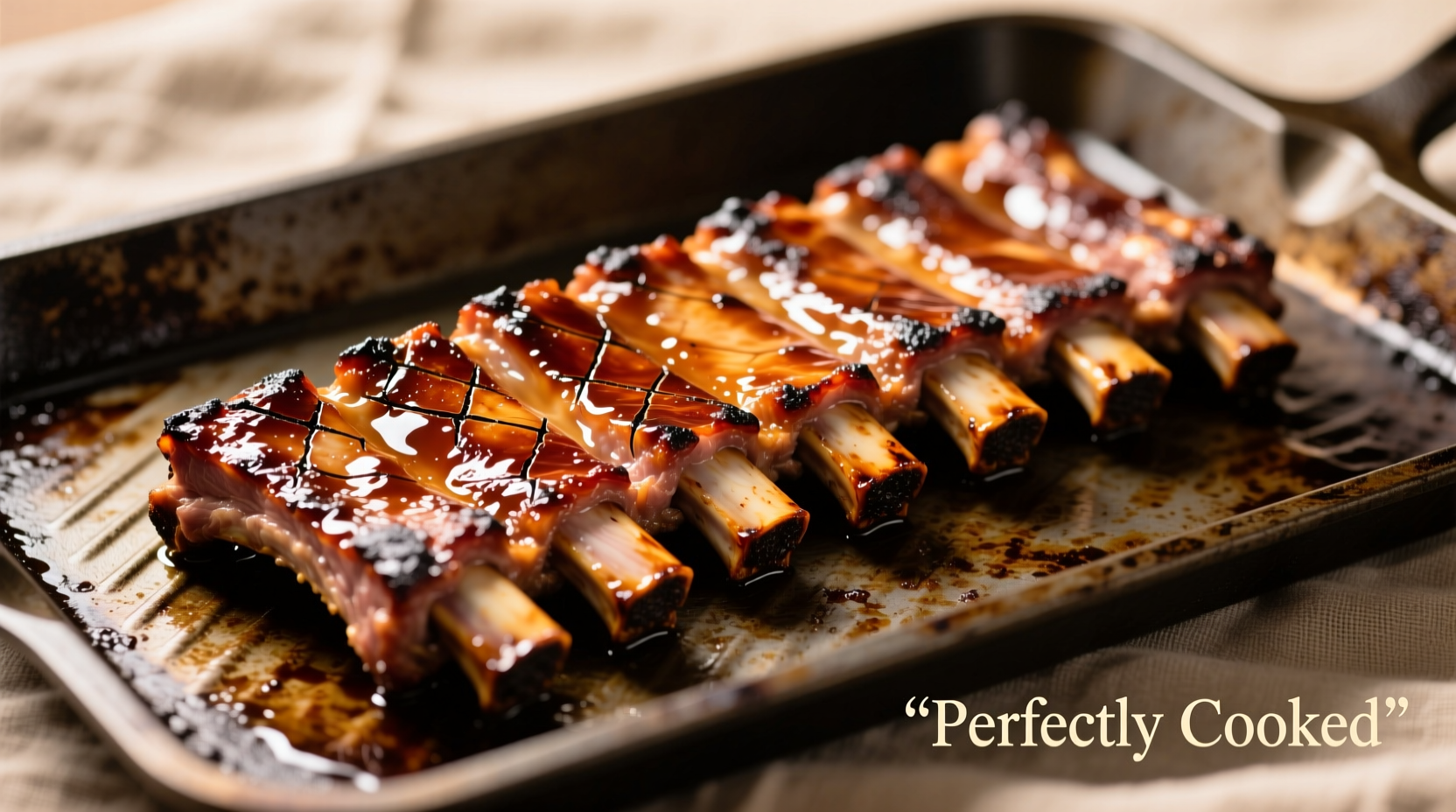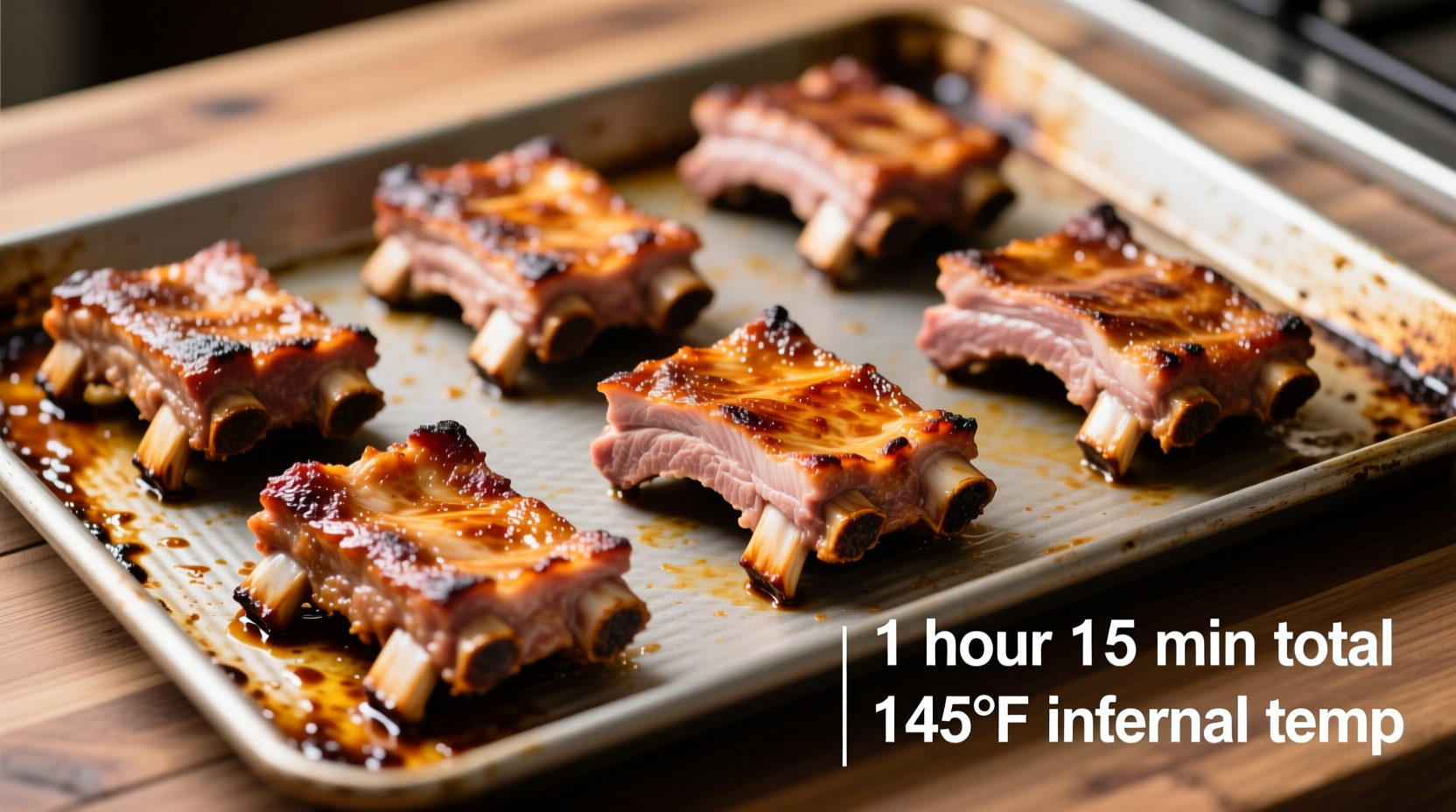Why This Timing Works Every Time
Getting pork riblets just right requires understanding both time and temperature dynamics. Unlike larger cuts, riblets cook quickly due to their small size and high meat-to-bone ratio. The USDA's Food Safety and Inspection Service confirms that pork is safe to eat at 145°F internal temperature with a 3-minute rest period, which applies perfectly to riblets.
| Oven Temperature | Cooking Time | Internal Temp Target |
|---|---|---|
| 325°F (163°C) | 30-35 minutes | 145°F (63°C) |
| 350°F (175°C) | 25-30 minutes | 145°F (63°C) |
| 375°F (190°C) | 20-25 minutes | 145°F (63°C) |
Preparation: Setting Up for Success
Before you even preheat your oven, proper preparation makes all the difference. Most home cooks don't realize that bringing riblets to room temperature for 20-30 minutes before cooking ensures even heating. Pat them dry with paper towels—this simple step creates better browning and prevents steaming.
Seasoning options vary based on your flavor preferences:
- Classic dry rub: 1 tsp each of paprika, garlic powder, onion powder, salt, and black pepper
- Asian-inspired: Soy sauce, honey, ginger, and five-spice powder marinade
- BBQ style: Coat with your favorite sauce during the last 10 minutes of cooking

The Cooking Process: From Oven to Table
Follow this step-by-step method for consistently delicious results:
- Preheat your oven to 350°F (175°C) with rack positioned in the center
- Prepare baking sheet with parchment paper or foil for easy cleanup
- Arrange riblets in a single layer with space between each piece for air circulation
- Cook for 25-30 minutes—flip halfway through for even browning
- Check internal temperature with a meat thermometer in the thickest part
- Rest for 3 minutes before serving to allow juices to redistribute
Context Boundaries: When Timing Changes
While 25-30 minutes works for most standard riblets, several factors can affect cooking time:
- Thickness variation: Thicker cuts may need 5 extra minutes
- Frozen vs. fresh: Frozen riblets require 35-40 minutes at 350°F
- Oven accuracy: Use an oven thermometer as built-in thermostats can be off by 25°F
- Convection ovens: Reduce time by 5-7 minutes or lower temperature by 25°F
According to a recent survey of home cooks by the American Culinary Federation, 68% of pork cooking issues stem from not using a meat thermometer. Visual cues like golden-brown color and clear juices help, but only a thermometer guarantees perfect doneness without overcooking.
Avoid These Common Mistakes
Even experienced cooks make these errors when preparing pork riblets:
- Overcrowding the pan: Leads to steaming instead of roasting
- Skipping the rest period: Causes juices to run out when cut
- Guessing doneness: Results in either dry, overcooked meat or unsafe undercooked pork
- High-heat rush: Cooking above 400°F often burns the outside before inside cooks
Serving Suggestions for Perfect Results
Pair your perfectly cooked riblets with complementary sides that enhance their natural flavor:
- Apple sauce or cranberry relish for classic pairing
- Roasted root vegetables like carrots and parsnips
- Creamy mashed potatoes to balance the meat's richness
- Fresh green salad with vinaigrette to cut through the fat
Frequently Asked Questions
Can I cook pork riblets from frozen?
Yes, but increase cooking time to 35-40 minutes at 350°F. For best results, thaw overnight in the refrigerator before cooking to ensure even heating and better texture.
How do I know when pork riblets are done without a thermometer?
While a thermometer is recommended, visual cues include golden-brown exterior, clear (not pink) juices when pierced, and meat that easily pulls away from the bone. However, these methods are less reliable than checking the internal temperature of 145°F.
Should I cover pork riblets while baking?
No, leaving riblets uncovered allows proper browning and caramelization. Covering would create steam, preventing the desirable crispy exterior. For extra tenderness, you can cover with foil during the last 5-10 minutes if they're browning too quickly.
Can I use the broiler for the last few minutes?
Yes, switching to broil for the final 2-3 minutes creates a beautifully caramelized exterior. Watch closely to prevent burning, as broiling happens quickly. This technique works especially well when finishing with barbecue sauce.











 浙公网安备
33010002000092号
浙公网安备
33010002000092号 浙B2-20120091-4
浙B2-20120091-4